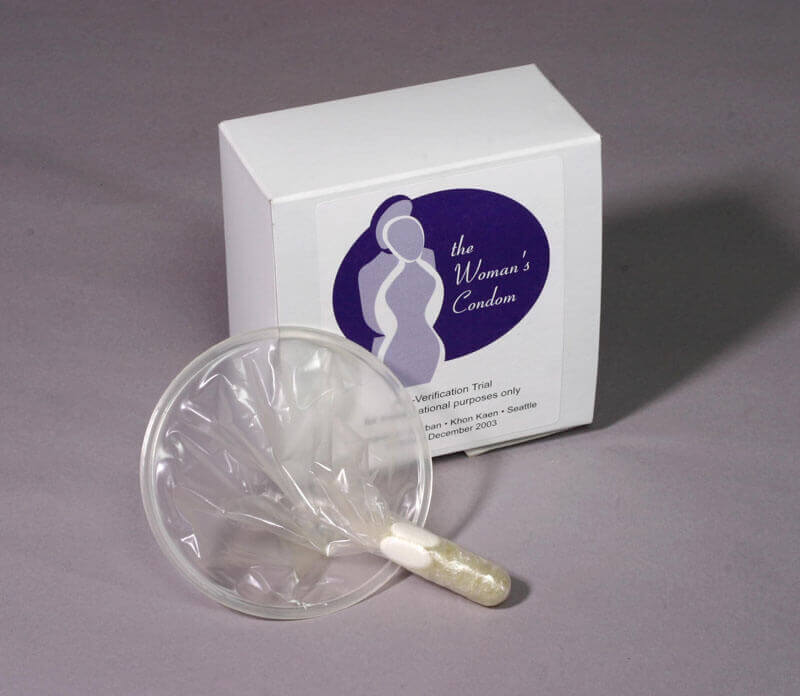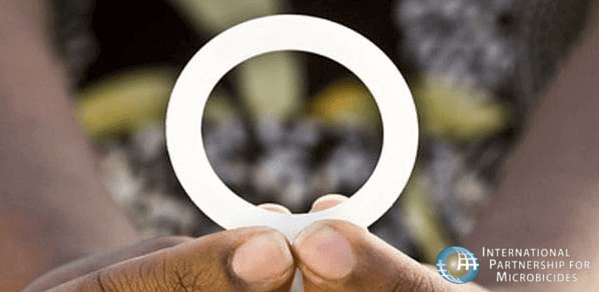Kat KelleyGHTC
Kat Kelly is a senior program assistant at GHTC who supports GHTC's communications and member engagement activities.
This International Women’s Day, GHTC is celebrating two novel, female-initiated health technologies that have the potential to give women and girls greater control over their sexual and reproductive health, empowering them to make informed decisions about whether and when to have children and to protect themselves and their families from HIV and other sexually transmitted infections (STIs).

This International Women’s Day, GHTC is celebrating two novel, female-initiated health technologies that have the potential to give women and girls greater control over their sexual and reproductive health, empowering them to make informed decisions about whether and when to have children and to protect themselves and their families from HIV and other sexually transmitted infections (STIs).
GHTC members PATH and the International Partnership for Microbicides (IPM) both recently announced exciting milestones in developing and expanding access to game-changing contraceptive and HIV/STI prevention tools that help women negotiate safer sex. The Woman’s Condom, manufactured by Shanghai Dahua Medical Apparatus Co., Ltd, (DAHUA) and marketed under various brand names including O’Lavie, received World Health Organization (WHO)/United Nations Population Fund (UNFPA) prequalification last week. This approval opens the door for its purchase and distribution by United Nations (UN) agencies and other leading international organizations for distribution in the public sector. And just the week before, IPM announced the results of two large Phase 3 clinical trials—The Ring Study and ASPIRE—which showed that a monthly vaginal ring containing the antiretroviral drug (ARV) dapivirine, developed by IPM, can safely help protect women from HIV.
Enduring unmet need for family planning and HIV/STI prevention methods
Globally, an estimated 225 million women have an unmet need for family planning and more than 350 million new cases of curable STIs occur every year. Women's and adolescent girls' contraceptive and HIV/STI prevention needs vary across geographies and cultures and often change throughout a woman’s life. Therefore, unmet need can only be addressed through ensuring access to a range of contraceptive options.
When women and adolescent girls make contraceptive decisions, they have a lot to consider:
Biologically and as a result of gender-based violence and discrimination, women and girls are at greater risk for HIV infection. In sub-Saharan Africa, women aged 15 to 24 are twice as likely to become infected with HIV compared to their male peers. And often, women are not empowered to negotiate safe sex with their partners, particularly the use of male condoms. The prevention methods currently available aren’t doing enough to stop the alarming rates of infection in women in sub-Saharan Africa and are often unrealistic options for them.
What makes these tools so game-changing for women?
The Woman’s Condom and the dapivirine ring put the power of protection in the hands of women.
The Woman’s Condom was developed by PATH, CONRAD, and other partners through a user-centered design process across four countries. “This iterative process enabled the partners to create a product that truly met the needs of women and couples. The Woman’s Condom is easy to insert, use and remove; stays in place during intercourse; and is comfortable, providing good sensation for both partners,” said Patricia Coffey, head of PATH’s Health Technologies for Women and Children Team. “Unlike other female condoms on the market, the Woman’s Condom’s main pouch is compressed into a narrow, rounded capsule which women insert like a tampon. And importantly, women can insert it themselves, without relying on their partner’s cooperation. It provides another option in cases where a male partner won’t use a male condom, and it also enables a woman to bring something to the relationship…it gives the woman a chance to take a more proactive role in protecting herself and her partner,” said Coffey.

The dapivirine ring is the first long-acting HIV prevention method designed for women. It adapts a medical device commonly used to deliver hormones to women—the vaginal ring—to deliver an ARV drug. The ring is easy for a woman to insert and remove herself, can be left in for one month, and used without the knowledge of a sexual partner. In two large Phase 3 clinical trials across four countries in sub-Saharan Africa, the ring was shown to reduce HIV infection rates by 31 and 27 percent overall. This is the first time two Phase 3 studies have confirmed statistically significant efficacy for a microbicide to prevent HIV. The studies found differences in efficacy by age and level of use: For women over 21, who appeared to use the ring more consistently, the ring reduced infection by 37 and 56 percent. The dapivirine ring could “give new hope to many women at high risk who need more and different options to effectively protect themselves from HIV,” according to IPM Founding Chief Executive Officer Dr. Zeda Rosenberg. “We are also hopeful we can learn more about how to help women who want to use the ring do so consistently, which could help increase protection.”
What do these announcements mean for access to these innovative new tools?
WHO/UNFPA prequalification represents an important step in increasing access to the Woman’s Condom, which is currently approved for use in China, Europe, Malawi, South Africa, and Zambia. Prequalification serves as an endorsement of quality, efficacy, and safety, particularly for nations with limited regulatory capacity. It not only enables UN agencies to procure the Woman’s Condom, but the US Agency for International Development—one of the largest female condom procurers worldwide—could rely on WHO prequalification, when a product has not been reviewed by the US Food and Drug Administration.
Introduction of the Woman’s Condom in new countries could also further grow the market for female condoms broadly. Because of its innovative insertion design, the Woman’s Condom has proven popular among users and some have even called the product “elegant” and “beautiful,” according to Coffey. Thus, the Woman’s Condom could help attract new users to the female condom product category and help normalize and increase regular and consistent use of female condoms.
The results from the two dapivirine ring trials are a significant step forward to getting an affordable microbicide ring into the hands of women who can benefit from it. Next, IPM will submit the dapivirine ring for regulatory review while simultaneously working with partners and governments to determine how the product can best strengthen HIV prevention efforts. IPM also plans to conduct an open-label extension (OLE) study that would provide former Ring Study participants with access to the dapivirine ring and enable IPM to collect additional information on its safety and efficacy. Such a study could help IPM better understand real-world use of the dapivirine ring, and awareness of the ring’s safety and efficacy could increase adherence among participants, as was seen in follow-up OLEs of oral pre-exposure prophylaxis.
The trial results also open the door to next-generation prevention products. IPM has several other microbicide products in the pipeline, including vaginal rings combining dapivirine with other ARVs and a vaginal ring containing dapivirine and a contraceptive hormone, which would last for three months and prevent both unintended pregnancy and HIV. The combination ARV rings are in Phase 1 and preclinical development, and the dapivirine-contraceptive ring is expected to enter a Phase I trial later this year.